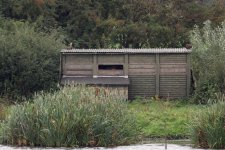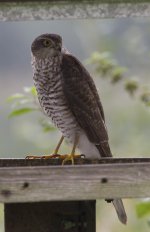Phil Andrews
It's only Rock and Roller but I like it

A good candidate for adult yellow legged gull, at the Moors today. several herrings were present and they were at least 2 or 3 shades lighter than this bird. I think it was too dark for Argentatus herring.
Did you see the legs - the considered opinion from Shetland based, on the photo, is thats its probably a dark mantled Herring Gull (rounded head shape, bill doesnt look particularly heavy)






